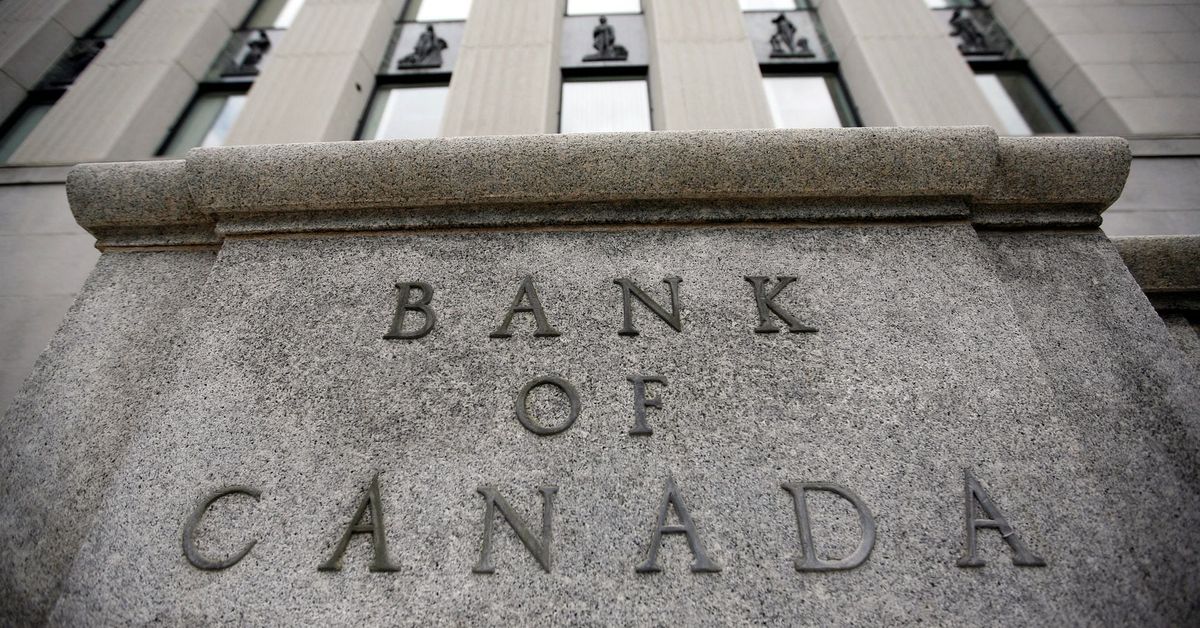
The Bank of Canada (BoC) kept its key overnight rate steady at 5% on Wednesday as expected but dashed the hopes of borrowers seeking relief, saying underlying inflation meant it was too early to consider a cut.
Governor Tiff Macklem said he could not put rate cuts on a calendar and noted that core inflation measures were too high. Overall inflation is 2.9%, still well above the bank’s 2% target.
“It would be great if this (high rates) worked faster. It would be great if it was less painful. But unfortunately, monetary policy, it does work slowly,” he told a press conference after the announcement.
The news to keep rates on hold helped push the Canadian dollar up 0.4% to 1.3540 per U.S. dollar, or 73.86 U.S. cents.
Shortly after the rate announcement, data showed that Canadian money markets now see a 23% chance of a rate cut in April, down from 43%. They have also pushed back bets for a fully priced in cut to July from June.
“To cut in June would be a stretch given their outlook for inflation and would likely require a more concrete pivot towards 2% in the near-term for the core measures,” said Kyle Chapman, FX Markets Analyst at Ballinger Group.
The BoC increased rates by 475 basis points to a 22-year high between March 2022 and July 2023 and has kept them on hold since then for five consecutive meetings in its efforts to cool inflation while avoiding pushing the country into a recession.
While this has cooled inflation from 8.1% in June 2022 to below 3%, price pressures especially from shelter and wages have continued to tick higher.
Governor Macklem said more time was needed to ensure inflation fell towards the central bank’s 2% target.
“It’s still too early to consider lowering the policy interest rate … future progress on inflation is expected to be gradual and uneven,” he said in remarks to reporters.
A majority of economists in a Reuters poll last week forecast the central bank would start cutting interest rates in June. But their views started shifting after the announcement on Wednesday.
“It sounds as if the Bank of Canada is very much following the Federal Reserve footsteps in expressing a need for greater confidence in the pace of disinflation,” said Karl Schamotta, chief market strategist at Corpay. “And that suggests that we’re going to need to see additional data releases before they pull the trigger on cutting rates.”
Inflation largely stayed above 3% for most of last year but eased to 2.9% in January. Macklem reiterated that the bank expected inflation to be close to 3% through the middle of 2024 before easing in the second half.
“The path back to our 2% target will be slow, and progress is likely to be uneven,” he said.
“Governing Council remains concerned about the persistence of underlying inflation and we want to see a further deceleration in core inflation in the coming months,” Macklem said.
He reiterated his comments from January’s policy announcement that the discussion within the Governing Council was shifting from whether the rates were restrictive enough to how long they needed to stay at their current level.
“We want to give Canadians as much information as we have, but we also don’t want to give a sense of false precision,” Macklem said.







